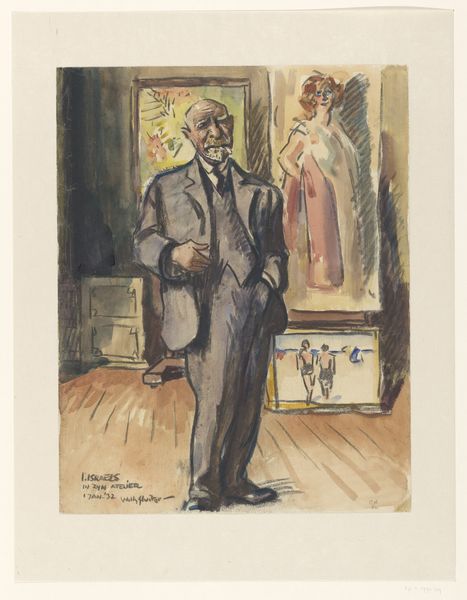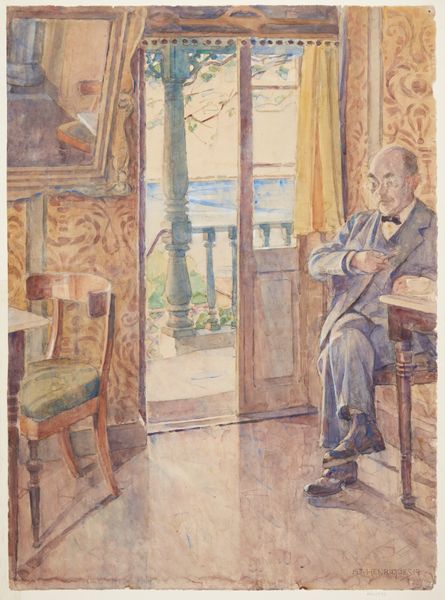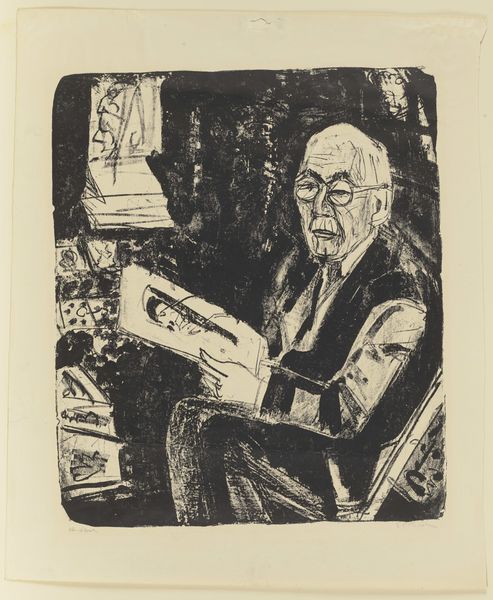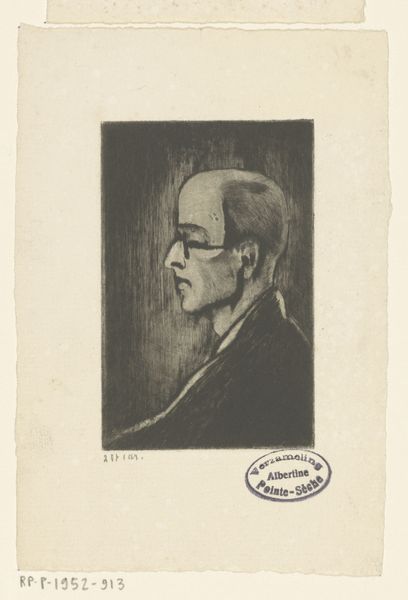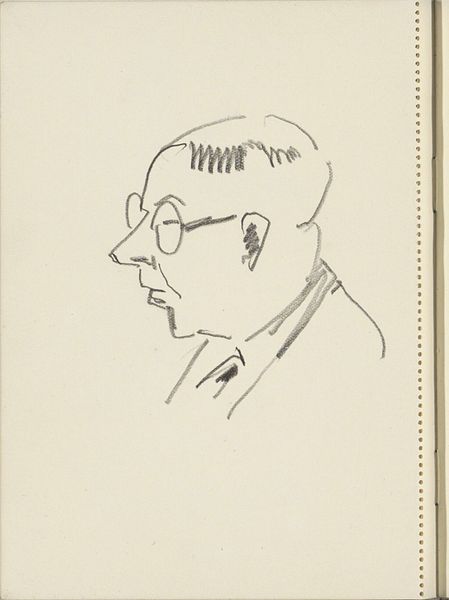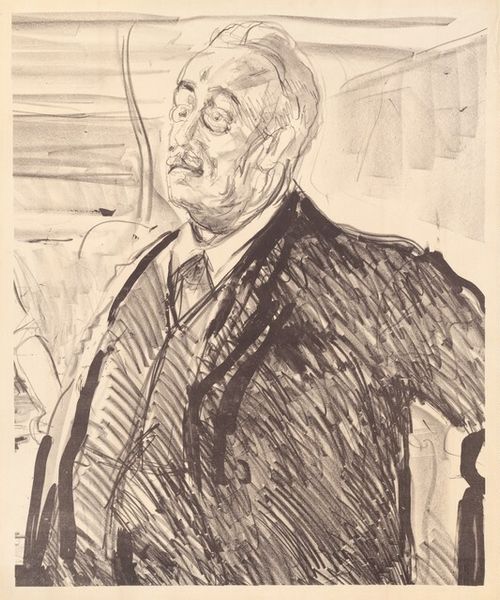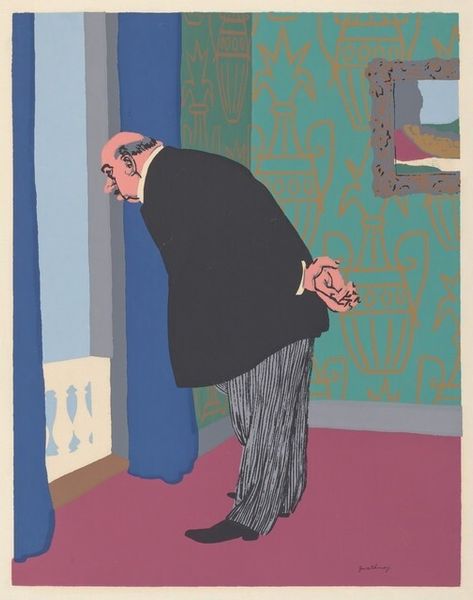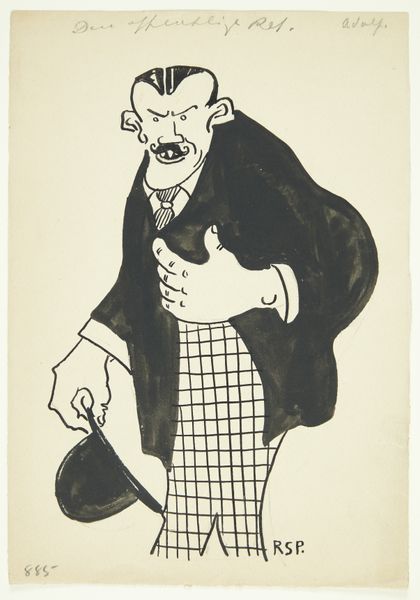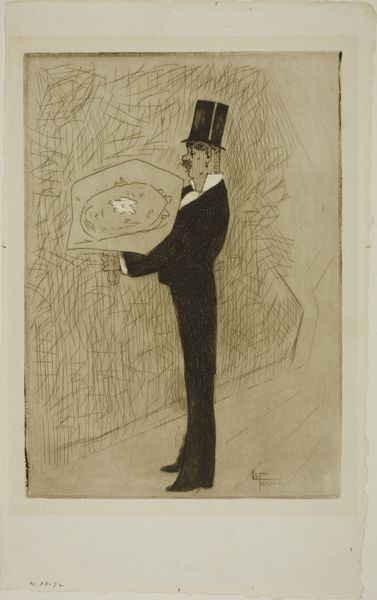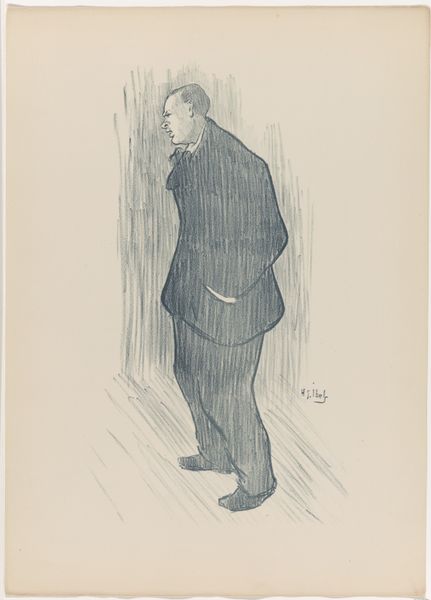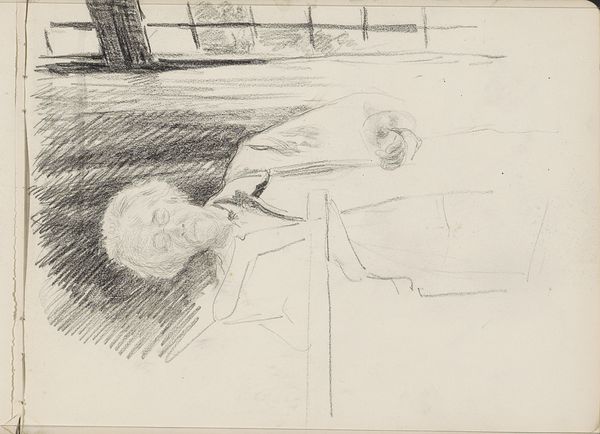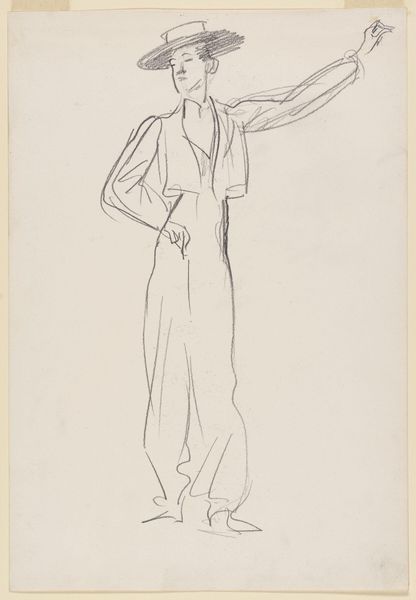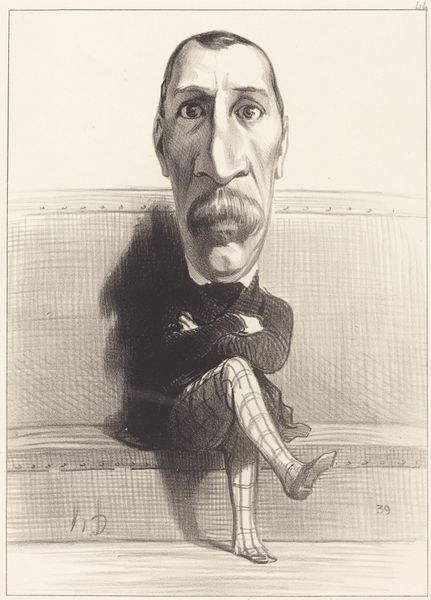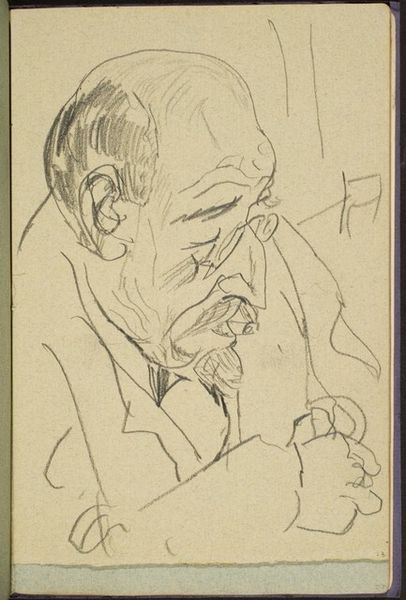
drawing, watercolor
#
portrait
#
drawing
#
caricature
#
figuration
#
watercolor
#
genre-painting
#
academic-art
Dimensions: sheet: 28.89 × 20.32 cm (11 3/8 × 8 in.)
Copyright: National Gallery of Art: CC0 1.0
Curator: This is Aline Fruhauf's "David Finley" created in 1949, rendered in watercolor and drawing. It presents a caricatured portrait set within a gallery space. What catches your eye? Editor: The composition is immediately striking—the elongated perspective draws my gaze into the depths of the depicted gallery. The exaggerated features of Finley, combined with the rather subdued palette, create a subtle tension. Curator: Fruhauf, known for her caricatures of notable figures, positions Finley amidst symbols of high culture, namely framed paintings and architectural elements. I think that her drawings, being often published in newspapers and magazines, invite considerations on cultural production and social perception. Editor: Absolutely. The very choice of watercolor lends itself to a lighter, more fluid representation compared to oils, fitting the medium to the message. It's as though Fruhauf is gently mocking, not vilifying. How do you feel about her compositional choices and how that may impact the artwork's meaning? Curator: She challenges traditional portraiture. Consider how the setting dominates; Finley almost blends with the architecture and the artwork surrounding him. The painting on the wall beside him mirrors him-- he may as well BE a painting, rather than an agent. It comments on the role of the individual versus the larger cultural framework, placing him not just in it, but swallowed up by it. Editor: It raises some compelling questions regarding taste, consumption and production of art, doesn't it? In our perception, that gallery wall speaks more than it should... Curator: Indeed. By depicting a man within a system of artistic representation and distribution, she implicitly explores labor and reception of culture, thus offering multiple layers of interpretation. Editor: This piece truly allows us to investigate the context and purpose in creating and interacting with portraiture. Thanks for opening my eyes! Curator: My pleasure. It's refreshing to see how traditional approaches can, when refracted through the lens of material analysis, open such dynamic avenues of contemplation.
Comments
No comments
Be the first to comment and join the conversation on the ultimate creative platform.
